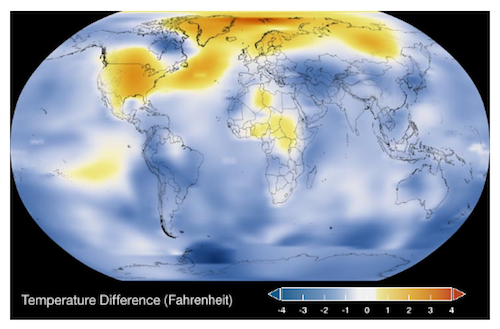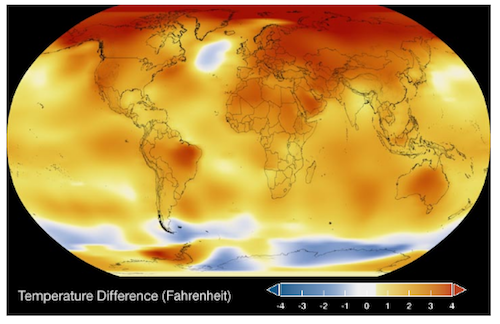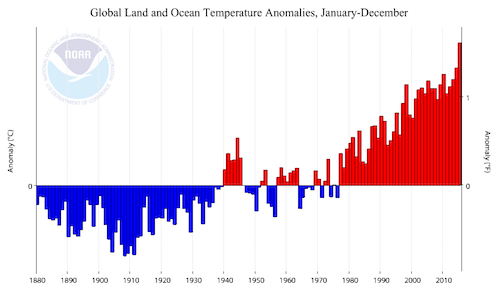 Arguments
Arguments
 Software
Software
 Resources
Comments
Resources
Comments
 The Consensus Project
The Consensus Project
 Translations
Translations
 About
Support
About
Support


Latest Posts
- Skeptical Science New Research for Week #16 2024
- How extreme was the Earth's temperature in 2023
- At a glance - Is the science settled?
- What is Mexico doing about climate change?
- 2024 SkS Weekly Climate Change & Global Warming News Roundup #15
- Fact Brief - Did global warming stop in 1998?
- Skeptical Science New Research for Week #15 2024
- EGU2024 - Picking and chosing sessions to attend virtually
- At a glance - The Pacific Decadal Oscillation (PDO) is not causing global warming
- Climate Adam: Is Global Warming Speeding Up?
- 2024 SkS Weekly Climate Change & Global Warming News Roundup #14
- Gigafact and Skeptical Science collaborate to create fact briefs
- Skeptical Science New Research for Week #14 2024
- How can I make my retirement plan climate-friendly?
- At a glance - Global warming and the El Niño Southern Oscillation
- A data scientist’s case for ‘cautious optimism’ about climate change
- 2024 SkS Weekly Climate Change & Global Warming News Roundup #13
- Skeptical Science New Research for Week #13 2024
- You can start applying for the American Climate Corps next month
- At a glance - Human fingerprints on climate change rule out natural cycles
- Want clean electricity? These are the overlooked elected officials who get to decide.
- 2024 SkS Weekly Climate Change & Global Warming News Roundup #12
- Climate - the Movie: a hot mess of (c)old myths!
- Skeptical Science New Research for Week #12 2024
- Climate Adam: Could the Amazon Rainforest Collapse?
- At a glance - Does CO2 always correlate with temperature?
- The U.S. has never produced more energy than it does today
- 2024 SkS Weekly Climate Change & Global Warming News Roundup #11
- Skeptical Science New Research for Week #11 2024
- Cartoons: ‘At least I didn’t make things awkward’
Archived Rebuttal
This is the archived Basic rebuttal to the climate myth "1934 - hottest year on record". Click here to view the latest rebuttal.
What the science says...
|
Globally the year 1934 was cooler than the 20th century average. |
The year 1934 was a very hot year in the United States, ranking sixth behind 2012, 2016, 2015, 2006, and 1998. However, global warming takes into account temperatures over the entire planet, including the oceans. The land area of the U.S. accounts for only 2% of Earth's total surface area. Despite the U.S. sweltering in 1934, that year was not especially hot over the rest of the planet, as you can see on the 1934 map below. Globally, 1934 temperatures were actually cooler than average for the 20th century.
1934
2016
Figure 1. Global temperature maps for 1934 (top) and 2016 (bottom). Source NASA.
Climate change skeptics have pointed to 1934 in the U.S. as proof that recent hot years are not unusual. Choosing the year 1934 is an obvious example of "cherry-picking" a single fact that supports a claim, while ignoring the rest of the data. In fact they have to cherry pick both a location (the U.S.) and a year (1934) to find data that is far from the global trend. Globally, the years 2014, 2015 and 2016 are the hottest on record, so far.

Figure 2. Global land and ocean temperatures from 1880 to 2015. Source: National Climate Data Center
The fact that there were hot years in some parts of the world in the past is not an argument against global climate change. Regional and year-to-year temperature variations will always occur. The reason we are worried about climate change is that on average, over the entire world, the long term trend shows an undeniable increase in global surface temperatures and global ocean temperatures. This rapid global heating is dramatically altering the planet we live on.
Updated on 2017-08-07 by dana1981.
THE ESCALATOR

(free to republish)
























































